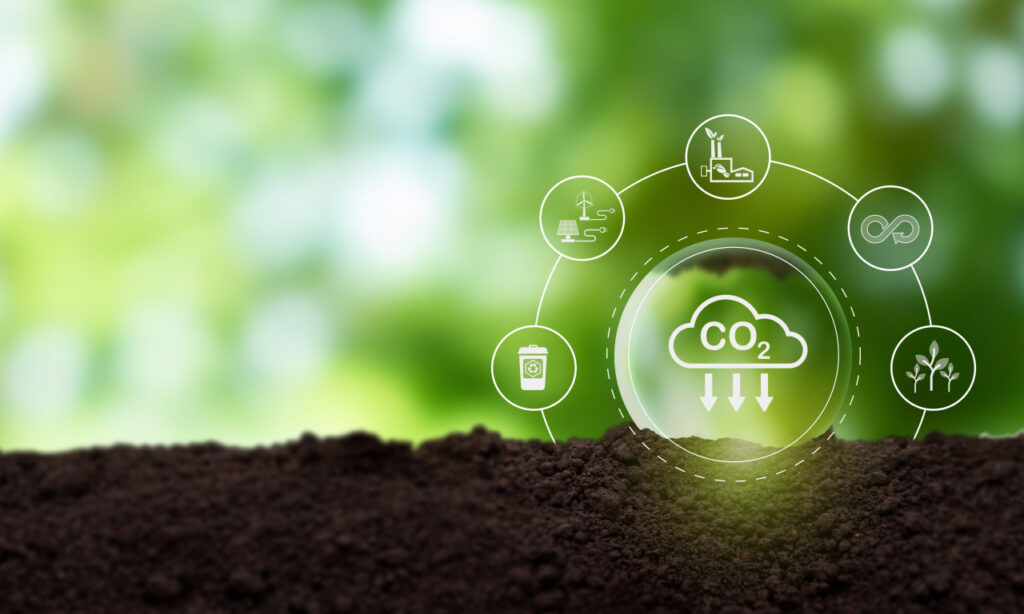碳捕集、利用和封存技术,暨CCUS技术是一种减少温室气体排放的重要技术。该技术可以从各种工业过程中捕获二氧化碳,然后将其转化为有用的产品,或者将其安全地储存在地下,从而避免对大气和气候造成影响。CCUS技术由其前身CCS碳捕集和封存技术演化而来,通过对捕捉的CO2再利用,能够让企业在完成第一次减排的情况下,进行二次节能。
Carbon Capture, Utilization and Storage, or CCUS, is an important technology for reducing greenhouse gas emissions. CCUS captures CO2 from various industrial processes and either convert it into useful products or stores it safely underground. CCUS evolved from its predecessor, Carbon Capture and Storage (CCS) technology, and by reutilizing captured CO2, it enables companies to save energy a second time by completing the first reduction of emissions.
中国是全球最大的能源消费国和二氧化碳排放国,近年来也在积极推动CCUS技术的推广。目前,中国政府已将CCUS纳入了《国家应对气候变化规划(2021-2025)》和《十四五规划》中,并设立专项基金,提供财政补贴,实施碳交易制度,明确了CCUS技术的发展目标和重点任务。
China, the world’s largest energy consumer and CO2 emitter, has also been actively promoting CCUS in recent years. Currently, the Chinese government has incorporated CCUS into the National Plan for Addressing Climate Change (2021-2025) and the 14th Five-Year Plan, and has set up funds, provided financial subsidies, implemented a carbon trading system, and clarified the development goals and key tasks of CCUS demonstration projects.
截止到2022年底,中国的CCUS示范项目已接近百个,其中半数已投入运营,对CO2的捕集能力约为400万吨/年。目前我国CCUS项目的对CO2的利用以地质利用为主,其中以地浸采铀技术为首的地质利用与封存技术分类,已和世界主流水平相当,达到了商业化的水平要求。但是,管网的集成化,一体化,集群枢纽的检测等方面,受制于起步较晚,项目分布位置及行业较为分散等因素,与世界主流水平仍有差距。
By the end of 2022, China has almost 100 CCUS demonstrations, half of which have been put into operation, providing a capture capacity of about 4 million tons/year of CO2. At present, the utilization of CO2 in China’s CCUS projects is dominated by geologic utilization. In this sector, ground-leach uranium mining technology has reached the world’s mainstream level. However, the integration of the pipeline network, cluster hub detection and other aspects, subject to the late start of the development and project distribution, still have a gap when compared with the world’s mainstream CCUS level.
在碳达峰的大目标前提下,中国CCUS的减排需求量正面临严重缺口,2025年CCUS减排需求量约为1400万~3100万吨/年,2030年将增长至5800万~1.47亿吨/年,2040年和2050年将分别达到10亿吨/年、20亿吨/年。综合来看,CCUS技术的推广前景较好,在接下来的几年里全面铺开,有着广泛的应用前景。
Under the premise of the carbon peak target, China’s CCUS emission reduction demand is facing a serious gap, 2025 CCUS emission reduction demand is about 14 million to 31 million tons/year, and in 2030 it will grow to 58 million to 147 million tons/year, and in 2040 and 2050 it will reach 1 billion tons/year and 2 billion tons/year. Overall, there will be a huge demand for CCUS in the next several years.
作为碳中和的先行者,欧洲企业从20世纪90年代起就开始了对二氧化碳的捕集,并尝试将其注入海上油气田中以达到增油的效果。2009年起,欧盟开始设立CCS项目(暨CCUS技术的前身,碳捕集和封存技术)的示范性项目网络,通过分享知识和相互学习,推动CCS技术的应用与推广,并给予CCS示范项目一定程度上的财政补贴。该项目网络自2019年起,全面升级转向CCUS技术。
As a frontrunner in carbon neutralization, European enterprises have started to capture CO2 since the 1990s and tried to inject it into offshore oil and gas fields for storage and press oil out. In 2009, the European Union started to set up a network of demonstration projects for CCS projects (the predecessor of the CCUS, carbon capture and storage), to promote the development and application of CCS through knowledge sharing and mutual learning, as well as financial subsidies. The network then shifted to CCUS in 2019.
欧洲企业对于CCS,CCUS技术的应用起步较早,目前欧洲的碳捕集能力已超过500万吨/年,并在以约300万吨/年的速度增长。欧洲企业在碳捕集技术方面有着先进的经验和成果,已经开发了多种成熟或正在研发的碳捕集技术,如基于溶剂、吸附剂、膜和高温循环的碳捕捉技术。欧洲还在碳利用技术方面进行了积极的探索,利用CO2合成多种产品,如轻质烯烃、精细化学品、聚合物和矿物碳酸盐等。
European enterprises have an early start applying CCS and CCUS technologies. By 2021, carbon capture capacity in Europe has exceeded 5 million tons/year and is growing at a rate of about 3 million tons/year. European enterprises have advanced experience and achievements in carbon capture technology and have developed a variety of mature carbon capture technology such as solvents-based, adsorbents, membranes, and high-temperature cycle technologies. Europe is also actively exploring carbon utilization technologies, using CO2 to synthesize a wide range of products, such as light olefins, fine chemicals, polymers, and mineral carbonates.
尽管中国和欧洲的企业在CCS和CCUS技术上的起跑时间存在差异,但对于减少排放的需求是一致的。目前越来越多的中欧间合作交流,也印证了这一点,来自欧洲的先进技术和经验,将能够有效的帮助中国企业避开脱碳路途上的误区,而中国企业和市场对于先进技术的落地和推广十分有益。仲欧脱碳科技致力于促进中欧之间,碳中和等领域的技术交流与合作。目前,仲欧脱碳科技已与来自欧洲和中国本土的近20家企业、机构达成了长期战略合作关系,并组建了由行业专家群体组成的科学委员会和专家顾问委员会,为企业提供可持续的脱碳技术解决方案咨询服务。
Despite the starting time the difference for Chinese and European enterprises in adapting CCS and CCUS technologies, the demand for emission reduction is the same. Advanced technology and experience from Europe will be able to effectively help Chinese enterprises to avoid the traps on the road to decarbonization, meanwhile Chinese enterprises and market are very supportive for promoting advanced technology.
China Euro Carbon Neutral (CNEUCN) is committed to promoting technical exchanges and cooperation between China and Europe in the field of carbon neutrality. Currently, CNEUCN has established long-term cooperation with a selected group of worldwide well-known leading companies, institutions, and academies to facilitate the dialogue and then the most efficient delivery of holistic solutions. For this purpose, it has established its own Scientific Committee and Experts’ Advisory Board, ensuring a unique “tailor-made” result done by the best professionals and scholars.
